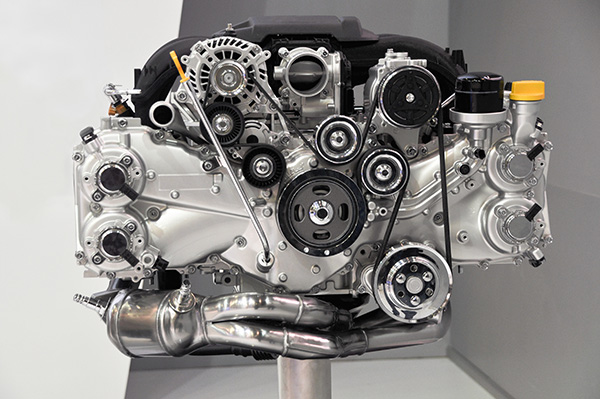
When deciding on a vehicle, the choice between a turbocharged engine and a naturally aspirated one is bound to come up. These two engine types serve different purposes and cater to varying driving preferences. Whether you’re seeking fuel efficiency, power, or long-term reliability, understanding the pros and cons of both can help you make an informed decision. Let’s explore the strengths and weaknesses of each to guide your choice.
What Is a Turbocharged Engine
Turbocharged engines use a turbine powered by exhaust gases to compress air and force it into the engine's combustion chamber. This extra air allows the engine to burn more fuel, generating more power without significantly increasing its size. Turbochargers are designed to maximize performance and efficiency, which is why they are becoming increasingly common in modern vehicles.
Pros of Turbocharged Engines
- Improved Power Output: Turbochargers deliver exceptional horsepower and torque, especially in smaller engines. This means you can enjoy a more powerful driving experience without needing a large, gas-guzzling engine.
- Enhanced Fuel Efficiency: By optimizing fuel usage, turbo engines are often more fuel-efficient than their naturally aspirated counterparts, particularly on highways or during steady driving.
- Smaller Size, Bigger Impact: Turbocharged engines are typically compact, allowing manufacturers to build smaller vehicles with impressive performance capabilities.
- Adaptable to Modern Driving Needs: With stricter emissions standards, turbo engines offer a balance between performance and eco-friendliness.
Cons of Turbocharged Engines
- Turbo Lag: Although greatly reduced in modern systems, turbo engines may experience a slight delay before the turbocharger kicks in, particularly at low RPMs.
- Higher Maintenance Costs: The complex design of turbo systems requires meticulous care. Components like intercoolers, turbochargers, and hoses need regular inspections.
- Shortened Lifespan: If improperly maintained or overused, turbochargers can wear out faster, resulting in costly repairs.
What Is a Naturally Aspirated Engine
Naturally aspirated engines rely solely on atmospheric pressure to draw air into the combustion chamber. These engines don’t use forced induction systems like turbochargers or superchargers, which makes them simpler in design. While they lack the performance boost of turbo engines, naturally aspirated engines have long been appreciated for their reliability and straightforward operation.
Pros of Naturally Aspirated Engines
- Linear Power Delivery: Naturally aspirated engines offer consistent power output, delivering a predictable and connected driving experience. This is especially valued by car enthusiasts.
- Reliability and Durability: With fewer components, these engines are less prone to failure and are often more durable over time.
- Lower Maintenance Costs: A simpler design means fewer parts to maintain or replace, translating to long-term savings.
- Easier Repairs: Mechanics are typically more familiar with naturally aspirated engines, making repairs quicker and less costly.
Cons of Naturally Aspirated Engines
- Lower Power Efficiency: These engines can’t match the power-per-liter efficiency of a turbocharged engine. You’ll need a larger displacement engine to achieve comparable performance.
- Fuel Consumption: Naturally aspirated engines can be less fuel-efficient, especially when driving aggressively.
- Altitude Sensitivity: At higher elevations, these engines may struggle due to reduced air pressure, unlike turbo engines that compress air.
Turbocharged vs. Naturally Aspirated: Which Fits Your Needs
The right choice ultimately depends on your driving habits and preferences. If you prioritize fuel efficiency, power, and a modern driving experience, a turbocharged engine might be the perfect fit. Turbo engines are particularly well-suited for city driving and long-distance commutes.
However, if reliability, simplicity, and cost-effective maintenance are more important to you, a naturally aspirated engine will likely meet your expectations. They’re ideal for drivers who value durability and a straightforward driving experience.
Caring for Your Engine
Regardless of the type of engine you choose, regular maintenance is essential to keep it running smoothly. Turbocharged engines require specific attention, including regular oil changes, inspections of the turbo system, and monitoring of exhaust gases. On the other hand, naturally aspirated engines benefit from consistent oil and air filter changes, along with routine tune-ups.
For residents in Ocala, FL, ensuring your vehicle gets professional maintenance can make all the difference. Both turbocharged and naturally aspirated engines perform their best when cared for properly. Don’t wait until problems arise—stay proactive with your vehicle’s care.
Whether you drive a turbocharged vehicle or prefer the classic reliability of a naturally aspirated engine, Ocala Auto Repair in Ocala, FL, is here to help. From routine inspections to comprehensive engine care, we’ve got your needs covered. Schedule your service today!